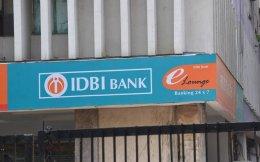At first glance, the government’s move to extend collateral-free debt funding of up to ₹10 crore to startups under the Department for Promotion of Industry and Internal Trade’s (DPIIT) Credit Guarantee Scheme for Startups appears to be a masterstroke, addressing the biggest challenge faced by start-ups, particularly in the growth and mid-stages of their development, while at the same time ensuring that India continues to retain its leadership position as one of the most vibrant markets for startups in the world, with more than 80,000 registered startups putting it in the third place in global rankings.
The scheme, notified last week, is pretty straightforward. The scheme would underwrite – guarantee, in other words – up to 80% of the credit facility up to ₹3 crore, 75% of the credit facility between ₹3 and 5 crore, and 65% of the credit facility between ₹5 and 10 crore extended to startups by banks and non-banking financial corporations (NBFCs).
In addition to transaction-based cover for single borrowers, there is also an umbrella cover for a group of eligible borrowers, which will provide a guarantee to venture debt funds registered under alternate investment fund (AIF) regulations of Sebi. “The extent of umbrella-based cover will be the actual losses or up to a maximum of 5% of pooled investment on which cover is being taken from the fund in eligible startups, whichever is lower. It is subject to a maximum of ₹10 crore per borrower," DPIIT said in a statement.
There is no mention of the corpus which will be used to underwrite these guarantees, although an earlier plan by the DPIIT proposed a corpus of ₹500 crore per year for four years as budgetary support to the National Credit Guarantee Trust Company, which will operate the guarantee scheme.
Credit guarantee schemes are of course a well-used tool by governments around the world, particularly to help micro, small and medium enterprises (MSMEs), which usually face the greatest difficulty in finding funding support, particularly for working capital. Practically, every major economy launched such a scheme in the wake of the Covid pandemic – according to a World Bank Tracker, as many as 57 new credit guarantee schemes were launched in 2020 alone around the world, while many existing ones were tweaked to address the special circumstances of the pandemic.
There is also a strong economic rationale for publicly-funded credit guarantee schemes for MSMEs (most startups fall under this bracket), since they account for almost a third of the gross domestic product (GDP) and a bulk of employment (estimated at around 100 million) in India. Typically, such businesses have high growth potential, contribute disproportionately to local economies where they are located and are high employment generators. At the same time, they tend to be highly risky, and are constrained by lack of a prior – or adequate – financial track record given their age and hence either miss out on traditional funding or have to pay much higher interest rates. But, as an OECD study (Financing SMEs and Entrepreneurs 2018) pointed out, the benefits have to be viewed against the costs – not just of operating the scheme, but of the opportunity cost of deploying public funds in this area vis-à-vis the returns if they were deployed in other areas like physical and social infrastructure creation, healthcare, education, etc.
This is where using taxpayer monies to fund risky startups becomes problematic. For startups are not traditional MSMEs as we know them. Take the eligibility criteria to be recognized as a startup by the DPIIT, the starting point for the scheme. They include an age criterion (less than 10 years in existence after incorporation), a turnover limit (an annual turnover not exceeding Rs 100 crore for any of the financial years since incorporation), should be an ‘original entity’ and not have been formed by splitting up or reconstructing an already existing business and most importantly, “Should work towards development or improvement of a product, process or service and/or have scalable business model with high potential for creation of wealth & employment."
The trouble is that there are no milestones/measures suggested to measure the actual creation of “wealth and employment" as far as startups are concerned. It therefore becomes practically impossible to evaluate how well a startup has performed in this context. Without this, it is impossible to estimate the opportunity costs of using public funds to back startups. So far, venture capitalists and funders have taken on the downsides of backing startups – potential failures and loss of value (Softbank’s Vision Fund alone lost $21.68 billion in value just in the first quarter of the current fiscal) and are therefore justified in taking the upsides (venture funders made over $14.3 billion in exits in 2021 according to Bain).
The government’s guarantee scheme, though, leaves the upsides still in private hand while passing on the downside risks to the taxpayers.






